Clothes for outdoor activities
The body fights against over-warming by sweating in every physical activity. By lowering the physical activity, the intensity of sweating decreases as well, but wet T-shirts stay on the body and make you cold.
Warmth disappears during outdoor activities in several ways:
By radiation - „emission“
By convention - current “flowing” around the body
By conduction - „contact“– by touching the cold snow, ground, etc.
By evaporating - the above stated sweating.
It is obvious that the isolated variations of warm loses appear only occasionally. We know about combinations of the above stated loses from practice – e.g. when it is raining it is often windy, etc.
The best system of clothing in the outdoors is layering. Layering means putting on clothes layers in a way it creates a functional system, which brings the user the highest comfort. The body has to be kept on the lowest border of the warm comfort so the human organism worked effectively. It is enabled right by clothing more layers of clothes, each has its own function thanks to recent materials.
First layer - the transport or absorbent function
The task of the first layer is to transport wet away from the body, so the user felt dry as much as possible. This layer is usually made from synthetic materials, such as polyester or polypropylene. Natural materials in a form of a special sheep wool Merino record a huge comeback.
Recommendations according to the realized activity:
During a low loading (walking, faster walking, downhill skiing) it is very suitable to use woollen shirts (Devold, Icebreaker etc.). They transport the sweat slower but you do not feel cold even in a damp shirt.
During a very intensive loading shirts made from synthetic materials are preferred. They transport the sweat faster and dry faster.
Recommendation for choosing the first layer:
The synthetic shirts should be bought “just right” fitting, the woollen shirts is better to buy loser. It is necessary to have even the underwear (underpants, knickers, a bra) made from these materials so the whole clothing system worked well. If you use a cotton underwear, the whole system is dysfunctional, because the moisture stays in cotton fibres.
Second layer – the insulation layer
The aim of the second layers is the insulation against warm loses. The similar or same materials are used as in the first layer, only with higher material amount. The synonym for the second layer is “fleece jackets” made from polyester. These jackets changed a view on clothing in the outdoor, however, their biggest disadvantage is their low windproofness. Producers of natural material make woollen jackets, which are bigger and heavier.
The disadvantage of insulation materials is their low windproofness, they are only partly water repellent. This problem has been solved by using membranes. Among the most known material combining insulation features and windproofness belong Wind stopper or No wind. Jackets made from these materials resist wind and partly rain, however, they cannot substitute the outer layer.
Another possibility to combine pleasant features and windproofness is the soft-shell fabric. This material is resistant against mechanical damage.
The last group of jackets used as the second layer are jackets determined for winter, the insulation in them is made from synthetic fibres or down. They are light and space-saving.
Third layer – the outer layer
It is the last layer, which protects against the unpleasant weather influence, like wind, rain or snow. It has to be waterproof, but breathing at the same time. Materials for producing the third layer are mainly synthetic, however, you can find cotton jackets on market. The waterproofness and permeability can be fulfilled by a functional layer, which is covered from both sides by a fabric. This is called a three-layer laminate.
Among the most known membranes belong the GORE-TEX membrane. It is a Teflon membrane with unchanging features. The polyurethane layer covering the supporting fabric is another way of production. It is for example Dermizax, Gelanots, Entrant, etc. There is an indirect proportion between permeability and waterproofness. The more permeable the material is the less waterproof is. The last material is Sympatex, which uses polyester for producing the membrane.
Advice for choosing
When choosing a jacket, remember that the fashion colours are interesting but the fit and technical details are more important and make them pleasant companions in bad weather.
Look through the jacket carefully and focus on details (e.g. finishing zips, sleeves length, the back length and the hood,) and check whether all seams are taped.
Put the jacket on together with the “second layer” – draw the sleeves tight around wrists, adjust the hood, draw the lower end of the jacket tight.
Move with arms – the jacket should not limit you in any move, if you raise arms up, the jacket should not move above your trousers.
Washing the clothing
When washing never use a softening lotions, ordinary washing power, whitening lotions or stain removers. Wash only in washing liquids or in a soap.
Washing synthetic fibres – wash clothes often and use the programme for soft fibres, in washing liquids. The temperature should be 30 – 40 °C warm. Squeezing and drying in a drying machine is permitted.
Washing wool - woollen clothes do not have to be washed so often thanks to the seft-cleaning ability of fibres. It is possible to wash them in the washing machine using the programme for woollen clothes or better in hand. Producers recommend to wash from the underside. The washing liquid should contain lanolin or there are special liquids determined for washing wool (e.g. Bio wash).
The above stated recommendations are valid for washing the first and second layer.
Washing the outer layer
It is better to wash a jacket less dirty that really dirty and requiring so a bigger amount of washing liquid. Before putting the jacket or trousers in the washing machine, close all zips. If they it is locally very dirty (e.g. on collars), wash it locally by using a brush and a soap. Washing is recommended in a washing liquid and the temperature should be 40°C. For drying in a drying machine it is recommended to use a soft and warm programme. If you do not have a drying machine, it is necessary to iron it to keep the waterproofness. The iron should be set to 100°C and put a towel or a tea-cloth between the iron and the jacket. Iron it to be dry.
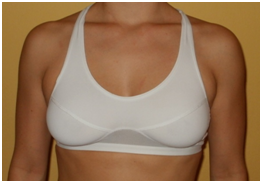 | |
| When dressing up it is neccesary to start with underwear – a bra made of synthetic materials | |
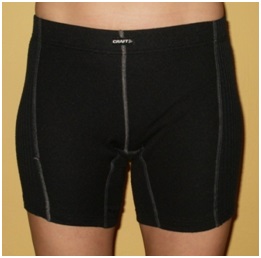 | |
| Briefs with elongated legs provide perfect insulation in colder weather | |
 | |
| Women briefs designed for warmer weather | |
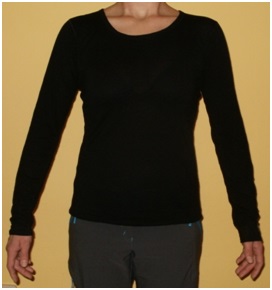 | |
| A loose shaped t-shirt made of Merino wool | |
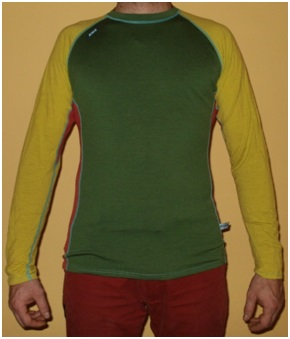 | |
| Some producers nowadays prefer colourful combinations – a t-shirt made of Merino wool | |
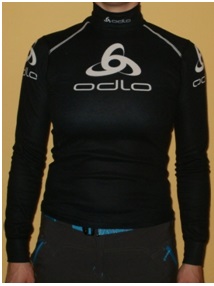 | |
| Some producers nowadays prefer colourful combinations – a t-shirt made of Merino wool | |
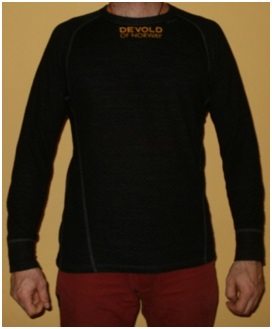 | |
| A double layer (devold říká dual layer) t-shirt for colder weather | |
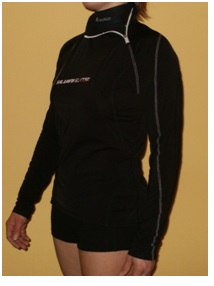 | |
| A t-shirt made of thinner material (polyester) | |
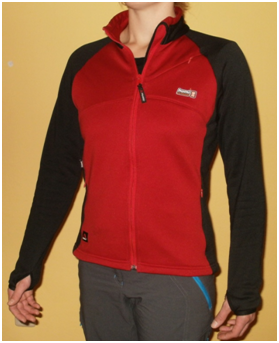 | |
| A legendary jacket made of power stretch material – elongated sleeves are very useful for cycling, cross country skiing, etc. | |
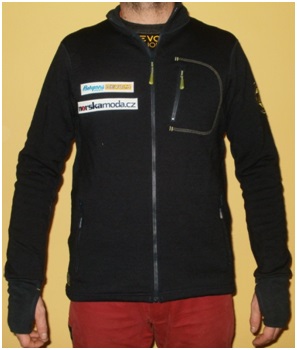 | |
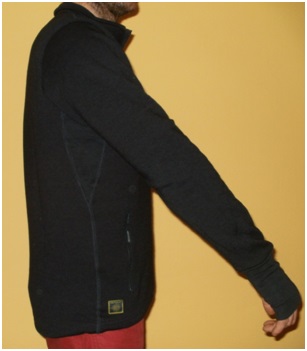 | |
| A woolen jacket with elongated sleeves and rear hem | |
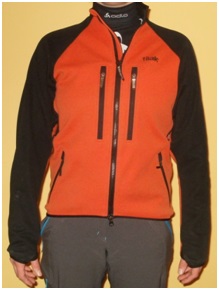 | |
| A windstopper jacket is produced as a combination of fabric and membrane | |
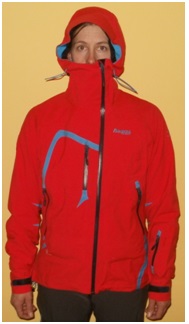 | |
| A windstopper jacket is produced as a combination of fabric and membrane | |
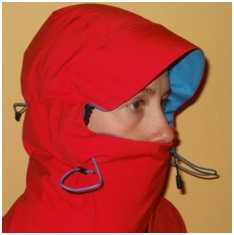 | |
| A detail of the hood - easily adjustable hood system allowing the wearer to customize the fit of the hood easily | |
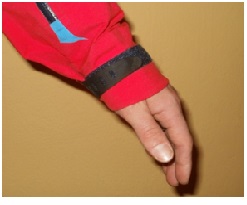 | |
| Elongated sleeves should be provided with surface fasteners at the cuffs – useful particularly in cold and rainy weather | |
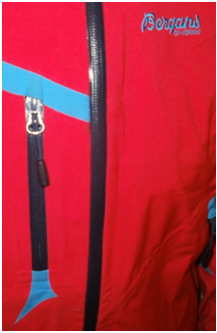 | |
| A detail of a waterproof zip (zipper, slide fastener) |
